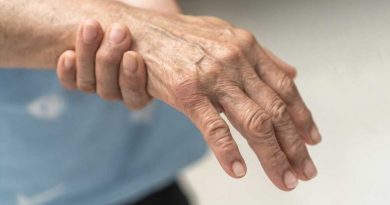Life Science Applications of Dynamic Light Scattering (DLS)
Dynamic Light Scattering (DLS) is a technique used in life sciences to establish the size and size distribution profiles of particles in solution.
Also known as photon correlation spectroscopy, DLS uses a light source such as a laser, which is shone onto particles that are in Brownian motion in solution. As light hits the particles, the wavelength of incoming light is altered and this change is related to particle size. The size distribution can then be calculated and information about how the particle moves in solution can be gained.
Brownian motion is named after the Scottish botanist Robert Brown, who was the first to study the random movement of particles. He realized the movement was random when he studied the movement of pollen grains in water using a microscope. In 1905, Albert Einstein explained that the grains were being moved by water molecules, which led him to develop his quantitative theory of Brownian motion.
When particles are subject to Brownian motion, they do not move in any particular direction, but eventually spread evenly throughout the medium they are in. This is referred to as diffusion.
In DLS, the light that hits the particles is scattered in all directions, which is referred to as Rayleigh scattering. The fact that the particles are undergoing Brownian motion means the light is scattered at different intensities. These intensity fluctuations can then be analysed to provide information about the size and size distribution of the particles.
One advantage of DLS is that only a small sample is required that does not need much preparation.
Weight and size of molecules
DLS is a widely used technique for establishing the size of proteins, nucleic acids, micelles, and carbohydrates, to name but a few. For example, it can be used to differentiate between a monomer and a dimer and can also measure particles that are less than one nanometre in size. DLS can be used to estimate the molecular weight of particles and to identify the different kinds of molecule present in the same solution.
Stability studies
Light scattering measurements have been used for half a century to look at aggregation phenomena of proteins in solution and can provide aggregation size measurements, from one nanometer, up to hundreds of microns.
Periodical measurement using DLS can show where aggregation is occurring over time. This is achieved by looking at whether there is an increase in the hydrodynamic radius of the particle. If protein aggregation is occurring, more of the particles will have a larger radius. An example of how this may be applied is the screening for unwanted aggregates in drugs that may trigger an immune reaction or cause adverse side effects. Another application is the investigation of protein aggregation diseases such as Alzheimer’s disease and Huntington’s disease.
References
- http://mxp.physics.umn.edu/s05/projects/s05lightscattering/introduction.html
- The BBC on Brownian motion: http://www.bbc.co.uk/education/guides/zgr2pv4/revision/5
- Encyclopaedia Britannica on Brownian theory: http://www.britannica.com/science/Brownian-motion
- University of California, San Diego: https://physics.ucsd.edu/neurophysics/courses/physics_173_273/dynamic_light_scattering_03.pdf
- Drum Lib UMD : http://drum.lib.umd.edu/bitstream/handle/1903/8314/umi-umd-5392.pdf?sequence=1&isAllowed=y
- http://ctcb.bio.ed.ac.uk/CTCB/DLS_-_Dynamic_light_scattering.html
- http://onlinelibrary.wiley.com/doi/10.1002/bmb.20644/abstract
- Wikipedia o Dynamic Light Scattering: https://en.wikipedia.org/wiki/Dynamic_light_scattering
- Beckman Coulter and DLS: https://www.beckmancoulter.com/wsrportal/wsr/industrial/particle-technologies/dynamic-light-scattering/index.htm
- LS Instruments and DLS: http://www.lsinstruments.ch/technology/dynamic_light_scattering_dls/
- Malvern Instruments and DLS: http://www.malvern.com/en/products/technology/dynamic-light-scattering/default.aspx
- Microtrac and DLS: http://www.microtrac.com/dynamic-light-scattering-systems-for-nanoparticle-measurements/#.VqrfcceyL-Y
- Horiba and DLS: http://www.horiba.com/uk/scientific/products/particle-characterization/technology/dynamic-light-scattering/
- Wyatt and DLS: http://www.wyatt.com/solutions/techniques/dynamic-light-scattering-nanoparticle-size.html
- Particle Sizing Systems and DLS: http://pssnicomp.com
- Dynamic Light Scattering Common Terms http://www.biophysics.bioc.cam.ac.uk/wp-content/uploads/2011/02/DLS_Terms_defined_Malvern.pdf
- Nottingham University on Light Scattering http://www.nottingham.ac.uk/ncmh/harding_pdfs/Paper208.PDF
- http://onlinelibrary.wiley.com/doi/10.1002/bmb.20644/abstract
Further Reading
- All Dynamic Light Scattering Content
- Using Dynamic Light Scattering (DLS) for Liposome Size Analysis
Last Updated: Aug 23, 2018

Written by
Deborah Fields
Deborah holds a B.Sc. degree in Chemistry from the University of Birmingham and a Postgraduate Diploma in Journalism qualification from Cardiff University. She enjoys writing about the latest innovations. Previously she has worked as an editor of scientific patent information, an education journalist and in communications for innovative healthcare, pharmaceutical and technology organisations. She also loves books and has run a book group for several years. Her enjoyment of fiction extends to writing her own stories for pleasure.
Source: Read Full Article



